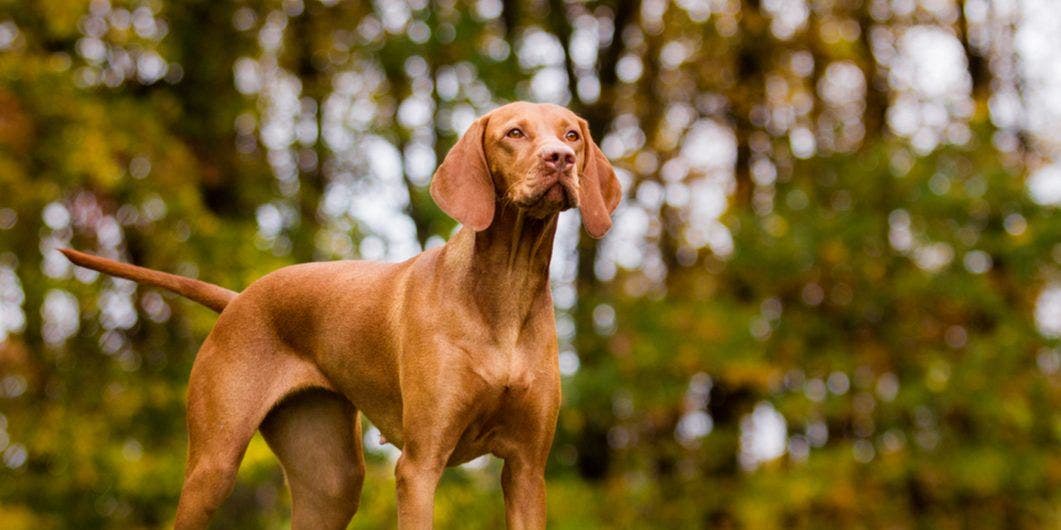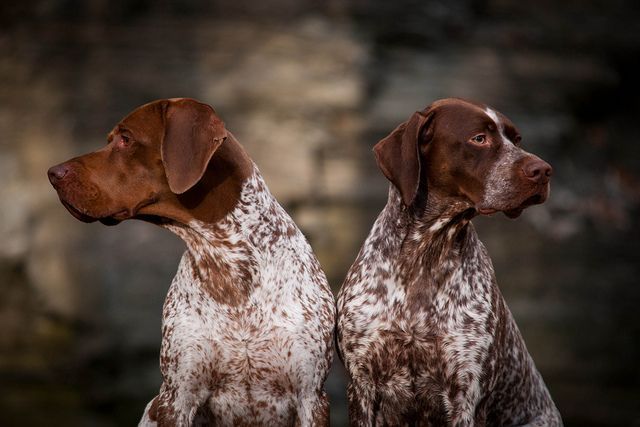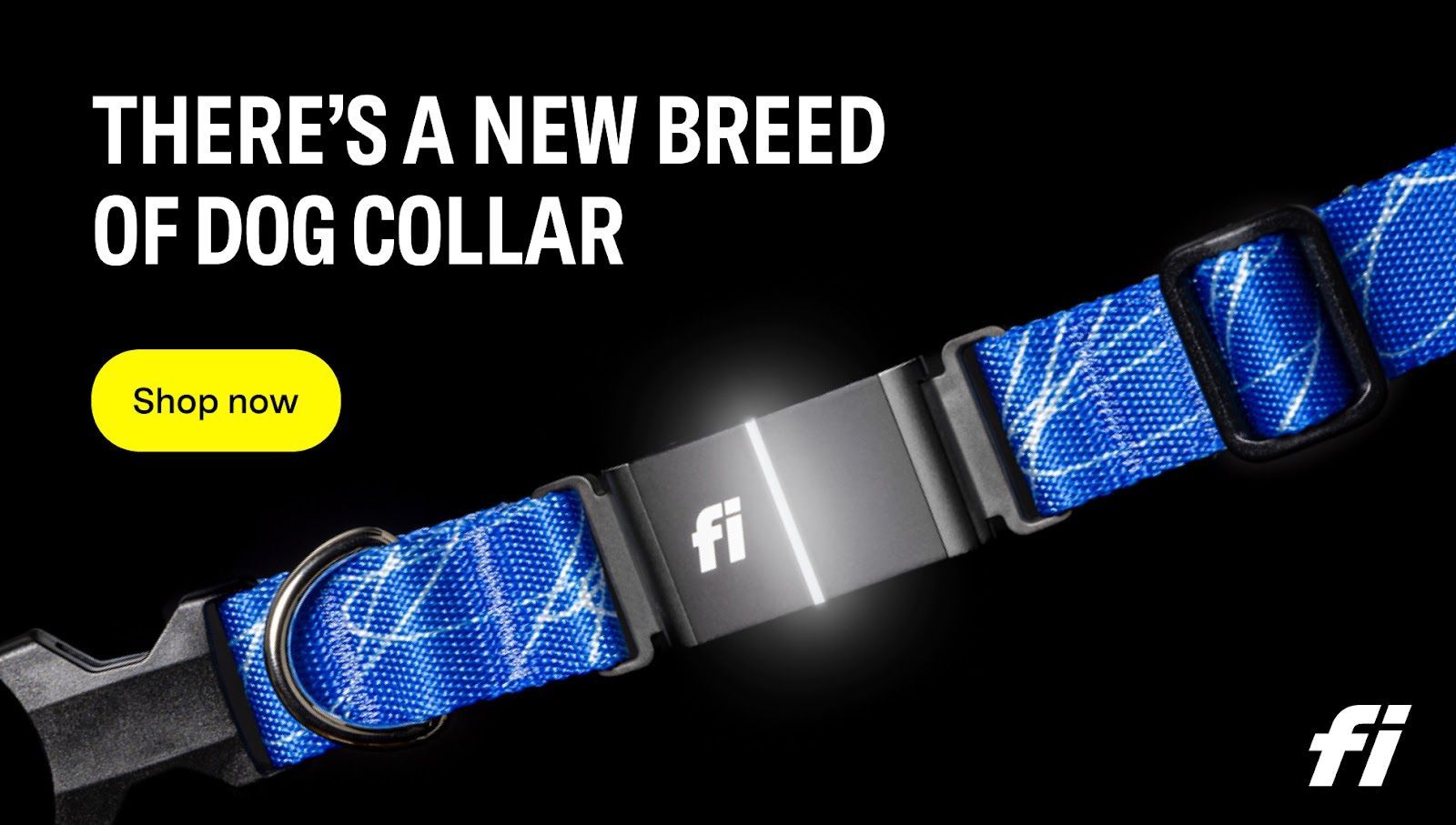The German Shorthaired Pointer and Vizsla are two popular breeds of hunting dogs known for their athleticism, intelligence, and loyalty. Understanding their similarities and differences in terms of physical characteristics, temperament, exercise needs, grooming requirements, trainability, and health is crucial for individuals considering either breed as a potential pet.
Physical Characteristics
The German Shorthaired Pointer has a distinctive appearance, characterized by a well-built, muscular body, a broad head, and a short coat that can come in various colors. On the other hand, the Vizsla is known for its sleek and elegant appearance, with a lean body, a noble head, and a short, dense coat that often has a rusty or golden hue.
Temperament and Personality
When it comes to temperament, the German Shorthaired Pointer is known to be energetic, intelligent, and highly sociable. They are affectionate and make excellent family pets. Similarly, Vizslas are also known for their friendly and affectionate nature. They thrive on human companionship and are excellent with children, making them ideal family pets as well.
Exercise and Activity Needs
Both breeds have high exercise requirements due to their sporting background. The German Shorthaired Pointer requires regular, vigorous exercise to channel their energy and prevent behavioral issues. Vizslas are also active dogs that appreciate ample physical exercise and mental stimulation to keep them happy and well-balanced.

Grooming and Maintenance
In terms of grooming, the German Shorthaired Pointer has a short coat that is relatively low maintenance. Occasional brushing and bathing are sufficient to keep their coat in good condition. Vizslas also have a short coat that is easy to maintain, requiring minimal grooming.
Training and Intelligence
Both breeds are intelligent and highly trainable. German Shorthaired Pointers are eager to please and quick learners, which makes training a relatively smooth process. Vizslas are also highly intelligent and respond well to positive reinforcement training methods.
Health and Lifespan
As with any breed, both German Shorthaired Pointers and Vizslas can be prone to certain health issues. German Shorthaired Pointers are known to be susceptible to hip dysplasia, certain types of cancer, and heart diseases. Vizslas may be prone to hip dysplasia, allergies, and certain eye conditions. In terms of lifespan, German Shorthaired Pointers typically live around 10 to 14 years, while Vizslas have a similar lifespan of about 10 to 14 years.
Choosing Between a German Shorthaired Pointer and Vizsla
Choosing between these two breeds ultimately depends on individual preferences, lifestyle, and the ability to meet their exercise and training needs. Prospective owners should consider factors such as energy levels, grooming requirements, and potential health issues when making a decision between the German Shorthaired Pointer and Vizsla. Consulting with reputable breeders and spending time with both breeds can also help in making an informed choice.
Physical Characteristics
When it comes to physical characteristics, the German Shorthaired Pointer and Vizsla each bring their own unique charm and appeal. From the distinctive appearance of the German Shorthaired Pointer to the eye-catching features of the Vizsla, these two breeds have characteristics that set them apart. In this section, we'll explore the distinct appearances of both breeds, diving into what makes them visually stunning. So, get ready to discover the fascinating physical traits of these beloved canines!

Appearance of German Shorthaired Pointer
The appearance of a German Shorthaired Pointer is distinctive and can be characterized by the following features:
- Body: German Shorthaired Pointers have a medium-sized, muscular body with a sleek, athletic build.
- Head: Their head is broad and in proportion to their body, with a pronounced stop and a slightly arched skull.
- Eyes: The eyes of a German Shorthaired Pointer are almond-shaped, dark brown, and have an intelligent and alert expression.
- Ears: The ears of a German Shorthaired Pointer are set high, moderately long, and hang down close to the cheeks.
- Coat: The coat of a German Shorthaired Pointer is short, dense, and water-repellent, with a thick undercoat.
- Color: German Shorthaired Pointers come in a variety of solid colors, including liver, liver and white, and combinations of white with black or brown patches.
Appearance of Vizsla
The appearance of the Vizsla breed is a distinct characteristic that sets them apart. Here are some key features of the Vizsla's appearance:

- Size: Vizslas are medium-sized dogs, typically weighing between 45-65 pounds.
- Build: They have a muscular and athletic build, with a deep chest and a strong, sleek body.
- Coat: The Vizsla has a short, dense, and smooth coat that comes in varying shades of rust or golden-red.
- Head: They have a distinctive head shape with a slightly domed skull and a long, muscular muzzle.
- Eyes and Ears: Vizslas have expressive, almond-shaped eyes that are typically a shade of brown. Their ears are long, hanging down, and set high on their head.
- Tail: The Vizsla's tail is typically docked to about two-thirds of its original length.
These physical attributes contribute to the Vizsla's elegant and noble appearance.
Temperament and Personality
The temperament and personality of German Shorthaired Pointers and Vizslas are a fascinating aspect to explore. Get ready to dive into the unique traits and characteristics of these two breeds. We will uncover the distinct temperaments of German Shorthaired Pointers, known for their energy and versatility, and Vizslas, celebrated for their affectionate and gentle nature. Prepare to discover what makes these breeds truly exceptional companions!
German Shorthaired Pointer Temperament
The temperament of the German Shorthaired Pointer is characterized by its energetic, intelligent, and friendly nature. When evaluating this breed, it is essential to consider the following key traits:
- Energetic: German Shorthaired Pointers are renowned for their high energy levels and require regular exercise to keep them mentally and physically stimulated.
- Intelligent: These dogs are highly intelligent and enthusiastic about pleasing, which makes them relatively easy to train. They excel in various activities such as obedience, agility, and hunting.
- Friendly: The German Shorthaired Pointers are generally friendly and sociable, both with their family and strangers. When properly socialized, they tend to get along well with children and other pets.
- Loyal: This breed is well-known for its loyalty towards its family members, making them protective and reliable companions.
- Independent: While they are loyal, German Shorthaired Pointers also possess an independent streak. They can be self-reliant and require mental stimulation to prevent boredom.

Vizsla Temperament
The temperament of the Vizsla is well-known for being friendly, affectionate, and gentle. These sociable dogs thrive on human companionship and are often referred to as "velcro dogs" because they love to be by their owner's side. Additionally, Vizslas are intelligent, trainable, and eager to please. However, it is important to note that they can be sensitive and may not respond well to harsh training methods. To prevent boredom and destructive behavior, it is crucial to provide them with both mental and physical stimulation. Due to their excellent temperament, Vizslas make an excellent choice for families, individuals, or households who can offer them the necessary attention and exercise they require.
Exercise and Activity Needs
When it comes to exercise and activity needs, German Shorthaired Pointers and Vizslas are two breeds that require special attention. Let's dive into the exercise requirements for each breed and discover how these energetic dogs fulfill their daily fitness needs. Get ready to explore the world of these active canines and learn why their exercise routines are crucial for their physical and mental well-being.
Exercise Requirements of German Shorthaired Pointer
The German Shorthaired Pointer is a high-energy breed that requires regular exercise to meet their exercise requirements. To keep them happy and healthy, it is essential to incorporate the specific exercise requirements of the German Shorthaired Pointer. These requirements include:
- Physical activity: These dogs need at least 1-2 hours of vigorous exercise every day to burn off energy and maintain a healthy weight.
- Mental stimulation: Engaging their minds is important too, so provide puzzle toys, obedience training, and interactive play sessions.
- Outdoor exploration: These active dogs enjoy exploring new environments, so take them on hikes, runs, or long walks in nature.
Exercise Requirements of Vizsla
Vizslas are known for their exercise requirements. These active and energetic dogs need regular physical activity and mental stimulation to stay happy and healthy. Here are some important aspects of their exercise routine:

- Physical activity: The Vizsla breed requires at least an hour of vigorous exercise daily. They thrive on activities like running, hiking, or playing fetch.
- Mental stimulation: Vizslas are intelligent dogs that benefit from mental exercises like obedience training, puzzle toys, or interactive games. These keep their minds sharp and engaged.
- Off-leash time: Vizslas thoroughly enjoy off-leash activities in secure environments such as fenced-in yards or dog parks. These spaces allow them to freely run and explore.
- Variety in exercise: To keep Vizslas happy, it's important to mix up their exercise routine. This can include activities like swimming, agility training, or scent work.
- Consistency: Regular daily exercise is crucial for Vizslas to prevent any behavioral issues that may arise due to pent-up energy.
Grooming and Maintenance
When it comes to grooming and maintenance, the German Shorthaired Pointer and Vizsla have their own unique needs. Let's uncover the secrets behind keeping these two breeds looking their best. We'll dive into the grooming necessities of the German Shorthaired Pointers, discovering what keeps their coat shiny and healthy. Then, we'll explore the grooming requirements of the Vizsla, uncovering the tips and tricks to maintain their sleek and stunning appearance. Get ready to elevate your dog's style game!
German Shorthaired Pointer Grooming Needs
- Grooming Needs of German Shorthaired Pointers: German Shorthaired Pointers, a breed known for their short, dense coats, require regular brushing to remove loose hair and prevent matting. It is also important to occasionally bathe them to keep them clean.
- Nail care: To ensure their comfort and prevent potential injury, regular nail trimming is crucial for German Shorthaired Pointers. Long nails can also hinder their mobility.
- Ear care: German Shorthaired Pointers are prone to ear infections, so it is essential to regularly clean and inspect their ears. Seeking advice from a veterinarian regarding proper cleaning techniques and ear care products is highly recommended.
- Dental care: Just like any other dog, German Shorthaired Pointers need regular dental care, which includes brushing their teeth and offering dental chews or treats to maintain good oral health.
- Grooming tools: To simplify and improve the grooming process, invest in high-quality brushes, nail clippers, ear cleaning solutions, and toothbrushes specifically designed for dogs.
Vizsla Grooming Needs
When it comes to grooming, Vizslas have specific needs that owners should be aware of. Here are some key considerations for Vizsla grooming needs:
- Brushing: Vizslas have short, smooth coats that require regular brushing to remove dead hair and distribute natural oils.
- Bathing: Due to their short coats, Vizslas don't require frequent baths unless they become dirty or smelly. Use a mild dog shampoo to avoid drying out their skin.
- Nail trimming: Regular nail trimming is important for Vizslas to prevent discomfort and potential injury. Trim their nails every 2-3 weeks or as needed.
- Ear cleaning: Vizslas are prone to ear infections, so it's crucial to clean their ears regularly using a veterinarian-recommended ear cleaner.
- Dental care: Like all dogs, Vizslas benefit from regular dental care, including brushing their teeth and providing dental chews or treats.
By following these grooming practices, owners can keep their Vizslas looking and feeling their best.
Training and Intelligence
When it comes to training and intelligence, German Shorthaired Pointers and Vizslas have their unique qualities. Let's dive into the trainability of German Shorthaired Pointers and discover why they are known for their obedience and adaptability. On the other hand, we'll explore the trainability of Vizslas and uncover the intelligence and eager-to-learn nature that make them a joy to train. So, whether you're considering one of these breeds or simply curious about their abilities, we'll help shed light on their training potential.
Trainability of German Shorthaired Pointer
The trainability of the German Shorthaired Pointer is a key factor to consider when choosing this breed. Here are some points to consider:

- The trainability of the German Shorthaired Pointer is highly commendable, as they are highly intelligent and eager to please.
- They excel in various types of training, including obedience, agility, and hunting, showcasing their trainability.
- Consistency is crucial when training this breed as they can become stubborn if they sense inconsistency, highlighting the importance of the trainability factor.
- Positive reinforcement techniques, such as rewards and praise, work best with German Shorthaired Pointers, enhancing their trainability.
- Early socialization and obedience training are essential to ensure they grow into well-behaved and well-rounded dogs, emphasizing the necessity of their trainability.
The trainability of the German Shorthaired Pointer makes them an excellent choice for those looking for a versatile and trainable companion.
Trainability of Vizsla
Vizslas are known for their exceptional trainability and intelligence, which makes them an excellent choice for owners seeking a dog that is easy to train and quick to learn.
- These quick learners: Vizslas have a high level of intelligence and possess strong problem-solving abilities, enabling them to quickly grasp commands and training cues.
- With their eagerness to please: These dogs display a strong desire to satisfy their owners, resulting in a willingness to learn and follow commands.
- They respond well to positive reinforcement: Vizslas are highly receptive to positive reinforcement training methods, such as treats, praise, and play rewards.
- Additionally, they adapt easily to different training activities: From obedience training to agility exercises, Vizslas can thrive in various types of training.
- Furthermore, they require mental stimulation: Vizslas belong to an active and energetic breed that needs both mental and physical exercise. Regular training sessions play a crucial role in fulfilling their intellectual needs.
Health and Lifespan
When it comes to the Health and Lifespan of German Shorthaired Pointers and Vizslas, there's a lot to uncover. We'll dive into the common health issues that can affect these two breeds, shedding light on the challenges they may face. Not only that, but we'll also explore the lifespan of German Shorthaired Pointers and Vizslas, revealing just how long these furry companions can potentially be by our side. So, let's get ready to discover the wellbeing and longevity of these remarkable dogs!
Common Health Issues in German Shorthaired Pointers
German Shorthaired Pointers are generally healthy dogs, but like all breeds, they are prone to certain common health issues. It is important for potential owners to be aware of these Common Health Issues in German Shorthaired Pointers in order to provide proper care and prevent any potential problems. Here are some common health issues in German Shorthaired Pointers:
- Hip Dysplasia: This is a developmental condition where the hip joint does not properly form, leading to discomfort and mobility issues.
- Bloat: Also known as gastric dilatation-volvulus (GDV), it is a life-threatening condition that occurs when the stomach fills with gas and twists on itself.
- Progressive Retinal Atrophy (PRA): This is a genetic condition that causes gradual vision loss and can eventually lead to blindness.
- Entropion: This is a condition where the eyelid rolls inward, causing the eyelashes to rub against the cornea and leading to irritation and potential eye damage.
- Hypothyroidism: This is a hormonal disorder that occurs when the thyroid gland does not produce enough thyroid hormone, resulting in a variety of symptoms including weight gain and lethargy.
By being aware of these Common Health Issues in German Shorthaired Pointers and working closely with a reputable breeder and veterinarian, owners can take steps to ensure the health and well-being of their German Shorthaired Pointers.
Common Health Issues in Vizslas
Common health issues in Vizslas can impact their overall well-being. Here are some commonly seen health issues in this breed:
- Hip dysplasia: This condition involves abnormal development of the hip joint, leading to pain and mobility issues.
- Progressive retinal atrophy (PRA): A degenerative eye disorder that can result in partial or total vision loss.
- Gastric dilatation volvulus (GDV): Also known as bloat, this is a life-threatening condition that affects deep-chested breeds and requires immediate medical attention.
- Ear infections: Due to their floppy ears, Vizslas can be prone to ear infections, which can cause discomfort and require treatment.
- Allergies: Vizslas may develop allergies to certain foods, environmental factors, or substances, leading to skin irritation and other symptoms.
It's important to note that not all Vizslas will experience these conditions, but being aware of them can help you monitor your pet's health and seek appropriate veterinary care. Remember, regular check-ups and a healthy lifestyle can contribute to a happy and thriving Vizsla. Did you know? Vizslas are known for their high energy levels, requiring plenty of exercise to keep them physically and mentally stimulated.
Lifespan of German Shorthaired Pointers
"The lifespan of German Shorthaired Pointers typically ranges from 10 to 14 years. Various factors such as genetics, diet, exercise, and overall healthcare can influence the lifespan of German Shorthaired Pointers. Providing a nutritious diet, regular exercise, routine vet visits, and proper grooming can help ensure a longer and healthier lifespan for German Shorthaired Pointers. It's also important to monitor for common health issues that may potentially impact the lifespan of German Shorthaired Pointers, such as hip dysplasia, bloat, and certain types of cancer. Proper care and attention can contribute to maximizing the lifespan of German Shorthaired Pointers and enjoying many years with these energetic and loyal companions.
Lifespan of Vizslas
The average lifespan of Vizslas is around 10 to 14 years. It's important to note that the lifespan of Vizslas can vary depending on their overall health and care. To ensure a long and healthy lifespan for your Vizsla, it is crucial to provide them with regular exercise, a balanced diet, and routine check-ups with a veterinarian. By addressing any potential health issues early on, you can further extend the lifespan of your Vizsla. Taking proper care of your Vizsla will allow you to enjoy their companionship for many years.

Choosing Between a German Shorthaired Pointer and Vizsla
When deciding between a German Shorthaired Pointer and Vizsla, it is important to consider various factors such as temperament, exercise needs, grooming requirements, and training abilities.
- Temperament: When it comes to temperament, German Shorthaired Pointers are well-known for their versatility, high energy levels, and loyalty. On the other hand, Vizslas are known for being affectionate, gentle, and sensitive.
- Exercise Needs: German Shorthaired Pointers require more exercise and mental stimulation due to their higher energy levels. On the contrary, Vizslas also need regular exercise but are adaptable to different activity levels.
- Grooming Requirements: German Shorthaired Pointers have short coats that require minimal grooming. However, Vizslas have short but dense coats that shed moderately and need regular brushing.
- Training Abilities: German Shorthaired Pointers are highly trainable and excel in various activities. Similarly, Vizslas are intelligent and eager to please, making them trainable as well.
Frequently Asked Questions
What are the main visual differences between a German Shorthaired Pointer and a Vizsla?
German Shorthaired Pointers are generally larger than Vizslas, with males reaching a maximum height of 25 inches and 70 pounds compared to Vizsla males at 24 inches and 60 pounds. Vizslas have a solid russet gold coat, while German Shorthaired Pointers come in a range of color variations, including liver and white, and black. Vizslas have a single short coat that is soft and less noticeable when shedding, while German Shorthaired Pointers have a short coat with some degree of roan, patching, or ticking.
Are German Shorthaired Pointers and Vizslas suitable for first-time pointing dog owners?
Both German Shorthaired Pointers and Vizslas can be suitable for first-time pointing dog owners. However, due to their high energy personality and need for consistent training, it is recommended that first-time owners work with a reputable dog trainer or behaviorist to ensure proper training and handling techniques are implemented.
Do German Shorthaired Pointers and Vizslas have a tendency to bite or show aggression towards humans?
No, neither German Shorthaired Pointers nor Vizslas are known for aggressive tendencies or biting. They both have friendly and loving natures and are generally good with people, including strangers. However, proper socialization and training are crucial to ensure optimal behavior and to prevent any undesirable situations.
Can German Shorthaired Pointers and Vizslas coexist peacefully with other pets?
Both breeds can generally coexist peacefully with other dogs if properly socialized. However, German Shorthaired Pointers are not typically suitable for households with smaller pets like rabbits or cats, as they have a higher prey drive. Vizslas, on the other hand, can be good with cats, dogs, and even other animals if introduced and socialized properly. It is important to note that individual personalities and proper introductions play a significant role in successful pet coexistence.
Are German Shorthaired Pointers and Vizslas prone to separation anxiety?
Both German Shorthaired Pointers and Vizslas can be prone to separation anxiety if not properly trained and provided with sufficient mental and physical stimulation. These breeds thrive on human companionship and may struggle with extended periods of alone time. It is recommended that owners of these breeds create a consistent routine, provide plenty of exercise and mental enrichment, and gradually expose them to short periods of alone time to prevent separation anxiety.
Which breed, German Shorthaired Pointer or Vizsla, is more commonly used for hunting and field competitions?
Both German Shorthaired Pointers and Vizslas are highly versatile hunting dogs and commonly used in field competitions. However, German Shorthaired Pointers are often preferred for their close working abilities and strong noses. They are known for their ability to track and locate game, making them popular choices for various hunting activities such as quail hunting and pheasant hunting. Vizslas, on the other hand, excel in their ability to learn quickly and perform various tasks, making them suitable for field competitions as well. Ultimately, the preference between the two breeds for hunting and field competitions may vary based on personal experience and specific hunting needs.




